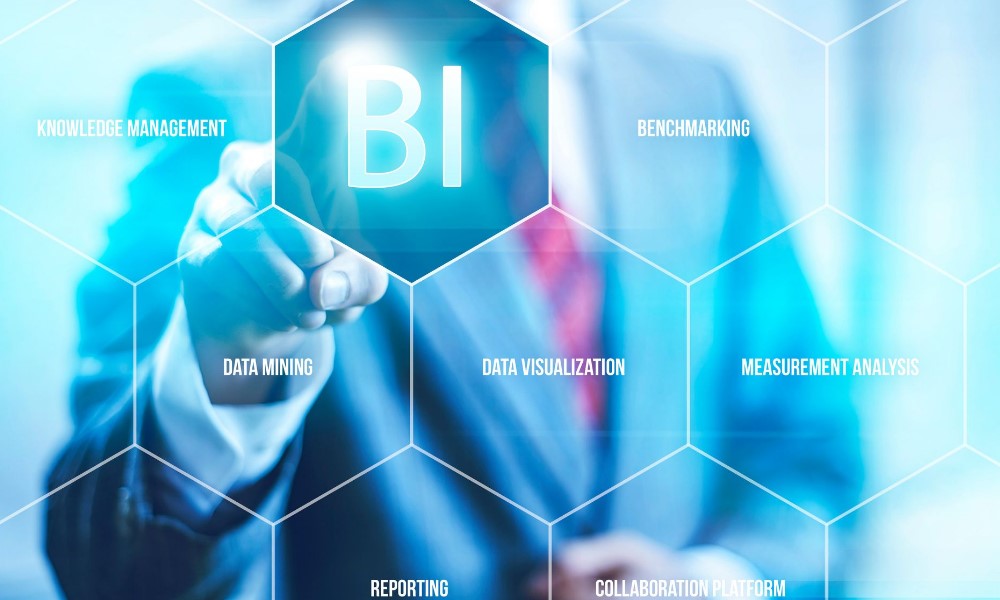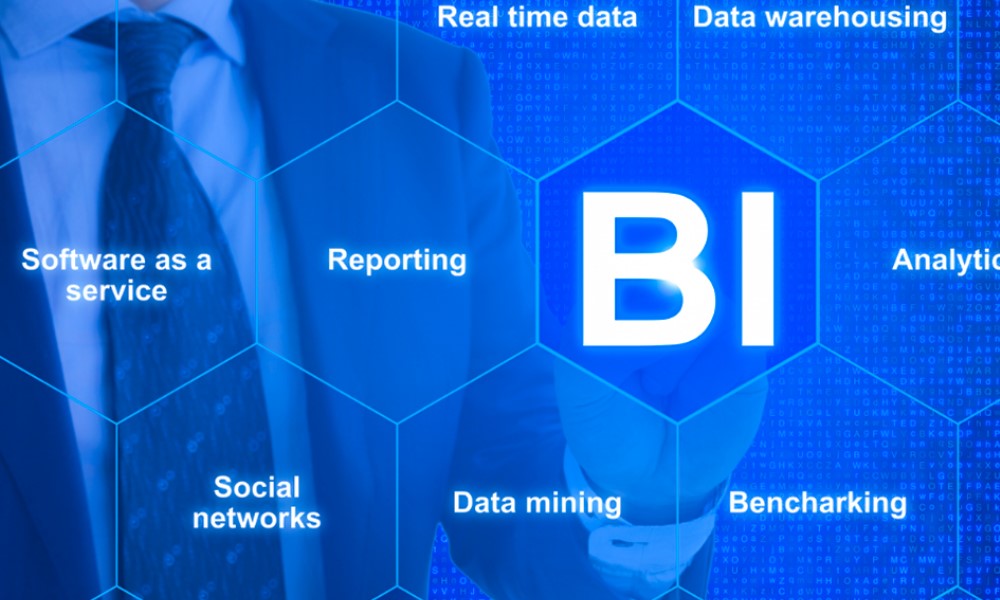Best Business Intelligence Software in 2024
In the fast-evolving business world, data is key to gaining a competitive edge. Business Intelligence (BI) software enables companies to harness the power of data, turning it into actionable insights that drive decisions, streamline operations, and uncover opportunities for growth. In 2024, BI software is no longer a luxury but a necessity for organizations across sectors—from small businesses to large corporations. This article provides an in-depth analysis of the best BI software solutions, their unique features, benefits, use cases, and step-by-step guidance on how to purchase and implement them effectively.
Understanding Business Intelligence Software

Business Intelligence Software refers to a suite of applications and technologies that collect, process, and analyze raw data from various sources, transforming it into meaningful insights.
BI tools help businesses visualize data through interactive dashboards, generate reports, and make strategic decisions based on real-time and historical data trends.
With BI software, companies can gain a comprehensive understanding of customer behavior, market trends, operational efficiency, and overall business performance.
BI Software Key Features
- Data Collection and Integration: BI tools gather data from multiple sources such as CRM systems, sales reports, and social media analytics.
- Data Visualization: BI tools allow businesses to create graphical representations of data, making it easier to identify trends, patterns, and anomalies.
- Predictive Analytics: Some BI software incorporates machine learning algorithms to predict future trends, helping businesses prepare for market changes.
Types of Business Intelligence Software

Business Intelligence (BI) software has evolved to accommodate various business needs, providing tools that allow organizations to leverage data-driven insights efficiently. Each type of BI software has unique strengths tailored to specific purposes, from data visualization to advanced analytics. Here, we outline the primary types of BI software available today.
1. Data Visualization Tools
Data visualization tools are among the most popular types of BI software, as they help convert complex datasets into visual formats such as charts, graphs, and dashboards. This makes data more accessible and understandable for decision-makers across departments. Tableau and Power BI are leading examples in this category. These tools are particularly useful for businesses that need to present data insights to stakeholders quickly, as they provide an intuitive and interactive interface for real-time data interpretation.
2. Reporting Tools
Reporting tools within BI software are essential for generating static and dynamic reports that summarize business performance and trends. These reports are often automated and can be tailored to cover specific metrics, such as monthly sales, customer demographics, and product performance. BI reporting tools like Crystal Reports allow businesses to keep a consistent record of their data and track changes over time, supporting informed decision-making based on historical performance.
3. Online Analytical Processing (OLAP) Tools
OLAP tools enable businesses to perform multi-dimensional analysis on large datasets, making it easy to identify trends, patterns, and anomalies within the data. This type of BI software is essential for businesses with complex data requirements, such as finance or retail, where datasets are vast and constantly changing. OLAP tools allow users to slice, dice, and drill down into data, revealing insights at various levels. Tools like IBM Cognos and SAP BusinessObjects offer strong OLAP capabilities for in-depth analysis.
4. Data Mining Tools
Data mining tools help businesses extract valuable information from large data sets, discovering patterns and correlations that can drive strategic decisions. These tools often use machine learning algorithms and statistical methods to identify hidden insights. Companies use data mining for predictive analysis, fraud detection, and customer segmentation, enabling more targeted marketing and better resource allocation. Popular data mining tools include RapidMiner and SAS Enterprise Miner.
5. Self-Service BI Tools
Self-service BI tools empower users without technical expertise to analyze and interpret data. These tools are designed for ease of use, enabling business users to create reports and visualize data without relying on IT. Power BI and Qlik Sense offer self-service capabilities that democratize data access, allowing teams to make data-driven decisions independently.
Each type of BI software addresses specific business needs, providing valuable insights that enhance strategic decision-making, operational efficiency, and competitive advantage.
How Business Intelligence Software Works?

Business Intelligence (BI) software functions through a systematic process that transforms raw data into valuable insights, supporting informed decision-making. The workflow of BI software generally includes data collection, data integration, data analysis, data visualization, and report generation. Here’s a closer look at how each stage works.
Data Collection
BI software gathers data from various sources such as databases, cloud applications, internal servers, and external sources like social media or public datasets. By connecting to these diverse sources, BI tools centralize data, ensuring that all relevant information is accessible within a single platform. This initial step is crucial for consolidating a wide range of data, laying the foundation for comprehensive analysis.
Data Integration
Once data is collected, BI software performs data integration, a process that involves cleaning, organizing, and merging data from multiple sources. This stage includes removing duplicates, filling in missing values, and standardizing formats to ensure data accuracy and consistency. Through data integration, BI software creates a unified view of information, enabling users to analyze data trends without manually combining files or sources.
Data Analysis
Data analysis is the core of BI software functionality. Advanced algorithms and analytics models analyze relationships within the data, identify trends, and forecast future outcomes. BI tools often support different types of analytics:
- Descriptive Analytics: Examines past data to understand historical patterns.
- Diagnostic Analytics: Determines the causes behind these patterns.
- Predictive Analytics: Uses historical data to anticipate future trends.
With these capabilities, BI software provides a deeper understanding of business data, enabling companies to derive actionable insights.
Data Visualization
BI software translates complex data into visual formats, such as charts, graphs, and dashboards. These visualizations make insights easier to understand and share across teams. Users can interact with the data through customizable dashboards, exploring trends by time, location, or other variables. Data visualization simplifies the presentation of information, allowing stakeholders to see the bigger picture and make decisions with greater clarity.
Report Generation and Sharing
Finally, BI software generates reports that can be shared within and across departments. Users can schedule regular reporting updates and securely share insights with team members or clients. This functionality keeps everyone aligned with the latest data insights, fostering collaboration and supporting strategic alignment.
Key Benefits of Using Business Intelligence Software

The advantages of integrating BI software into an organization’s processes are multifold. Here’s a closer look at how these tools can improve business outcomes:
- Informed Decision-Making: BI software offers data-backed insights, allowing businesses to make strategic, well-informed decisions rather than relying on intuition alone. For instance, marketing teams can use BI data to determine the most effective channels, times, and messages for reaching their audience.
- Operational Efficiency: By centralizing data from various departments, BI tools reduce the need for manual data entry, minimize errors, and automate reporting tasks. This allows employees to focus on higher-value activities that contribute directly to business growth.
- Enhanced Customer Understanding: With detailed customer data, companies can segment their audience, track purchasing behavior, and create personalized marketing campaigns. BI software helps identify which products or services are most popular, enabling businesses to allocate resources more effectively.
- Competitive Advantage: Access to real-time and historical data provides insights into market trends, competitor performance, and consumer preferences. Companies can stay ahead by identifying gaps in the market, adjusting strategies, and capitalizing on opportunities before their competitors do.
- Financial Optimization: BI tools offer a comprehensive view of financial data, from revenue and expenses to cash flow. This enables organizations to optimize budgets, reduce costs, and forecast profits with greater accuracy.
Top Business Intelligence Software Solutions in 2024
Selecting the right BI software can make a significant impact on a company’s efficiency and profitability. Here are three top BI software solutions with their features, pros, cons, and ideal use cases.
1. Microsoft Power BI
Microsoft Power BI is a leading BI tool known for its intuitive interface, powerful analytics, and seamless integration with other Microsoft products. Power BI caters to a wide range of users, from beginners to advanced data analysts, and offers a variety of deployment options.
Features:
- Real-Time Data: Provides access to real-time dashboards, helping businesses respond quickly to market changes.
- Data Modeling: Users can drag and drop data from multiple sources, making it easy to analyze large datasets.
- Integration: Integrates effortlessly with Microsoft tools like Excel and Azure, making it ideal for businesses already using the Microsoft ecosystem.
Pros:
- User-friendly, even for those new to BI software
- Affordable pricing for small to medium-sized businesses
Cons:
- Limited customization for advanced analytics
Price: Starting at $9.99 per user per month.
Use Cases:
- Marketing Analysis: Marketing teams can use Power BI to monitor campaign performance, track customer engagement, and optimize their strategies.
- Sales Forecasting: Sales departments can leverage Power BI to forecast demand, set realistic sales targets, and improve resource allocation.
How to Buy: Available for direct purchase on the Microsoft Power BI website.
2. Tableau
Tableau is renowned for its advanced data visualization capabilities, allowing users to create interactive, dynamic dashboards. As one of the most powerful tools for data visualization, Tableau is widely adopted in industries where data storytelling is key, such as finance, healthcare, and retail.
Features:
- Visual Analytics: Offers a wide range of data visualization options, from simple graphs to complex interactive dashboards.
- AI-Powered Insights: Uses artificial intelligence to identify patterns and provide predictive insights.
- Data Integration: Connects with numerous data sources, including cloud databases, spreadsheets, and SQL.
Pros:
- Exceptional data visualization tools
- Strong community and extensive learning resources
Cons:
- Higher pricing compared to other BI tools
- Steeper learning curve for beginners
Price: Starts at $70 per user per month.
Use Cases:
- Financial Analysis: Financial institutions use Tableau to track performance metrics, analyze market trends, and make data-driven investment decisions.
- Healthcare Insights: In healthcare, Tableau aids in patient data analysis, tracking outcomes, and identifying areas for improvement in care.
Where to Buy: Available for purchase on Tableau’s official website.
3. Qlik Sense
Qlik Sense is a self-service BI tool that allows users to explore data independently with its unique associative analytics engine. Known for its versatility and flexibility, Qlik Sense is favored by organizations with complex data requirements.
Features:
- Associative Data Indexing: Enables users to explore associations and uncover insights that may be hidden in traditional databases.
- AI-Powered Analytics: Provides AI-driven suggestions, helping users uncover trends and patterns with minimal effort.
- Customizable Dashboards: Highly customizable for specific use cases and industry needs.
Pros:
- Excellent for complex data analysis
- Offers high-level customization
Cons:
- Requires technical knowledge for setup and management
- Limited features in the free version
Price: Pricing available upon request.
Use Cases:
- Supply Chain Management: Qlik Sense helps companies optimize their supply chain by analyzing inventory data, logistics, and delivery performance.
- Customer Segmentation: Businesses can use Qlik Sense to categorize customers based on behavior, helping target products or services effectively.
How to Buy: Qlik Sense is available on the Qlik website.
Detailed Benefits of Business Intelligence Software
Business Intelligence software is a valuable investment for organizations of all sizes, offering distinct advantages for different business functions:
- Sales: BI tools enable sales teams to track performance metrics, set realistic targets, and predict future revenue based on historical data.
- Marketing: Marketing departments can leverage BI software to analyze customer segments, measure the effectiveness of campaigns, and make data-driven marketing decisions.
- Human Resources: HR departments use BI tools to evaluate recruitment efforts, track employee performance, and identify opportunities for professional development.
- Finance: Financial analysts rely on BI tools to manage budgets, forecast cash flows, and optimize resource allocation.
Comparison of Business Intelligence Software
When selecting BI software, consider the following comparison points:
- Features: Power BI is user-friendly and integrates with Microsoft, Tableau excels in data visualization, and Qlik Sense offers advanced associative analytics.
- Pricing: Power BI is budget-friendly for small businesses, Tableau is suitable for those prioritizing advanced visuals, and Qlik Sense is ideal for organizations requiring complex analytics.
- Ease of Use: Power BI is suitable for users familiar with Microsoft products, Tableau has a steeper learning curve, and Qlik Sense is best for those with a technical background.
Where and How to Buy Business Intelligence Software
Each of the featured BI tools can be purchased directly from their respective websites, with various pricing models to suit business needs:
- Power BI: Available on Microsoft’s official website, with flexible monthly or annual subscriptions.
- Tableau: Visit Tableau’s website to explore different pricing plans and deployment options.
- Qlik Sense: Qlik’s website offers customized pricing based on organization size and data needs.
FAQs
1. What is the most beginner-friendly Business Intelligence software?
Microsoft Power BI is highly recommended for beginners due to its intuitive interface and integration with Microsoft tools, making it easy for new users to learn and navigate.
2. How does Business Intelligence software help improve data accuracy?
BI tools consolidate and analyze data from multiple sources, reducing the likelihood of errors and providing real-time insights that improve accuracy and decision-making.
3. Are there free options for Business Intelligence software?
Yes, many BI tools offer limited free versions, like Power BI and Qlik Sense, which are suitable for smaller projects or for evaluating the software before a full investment.